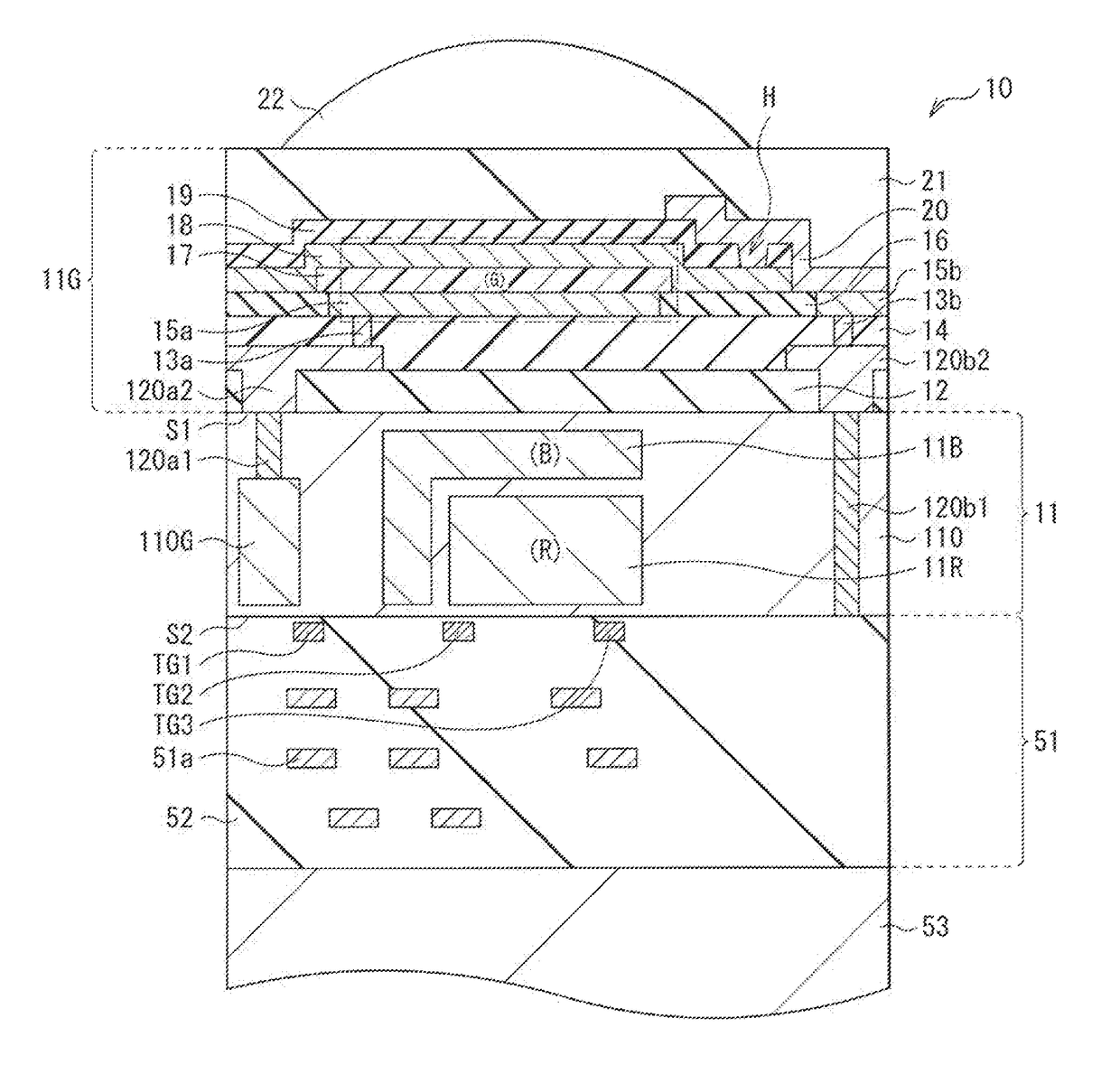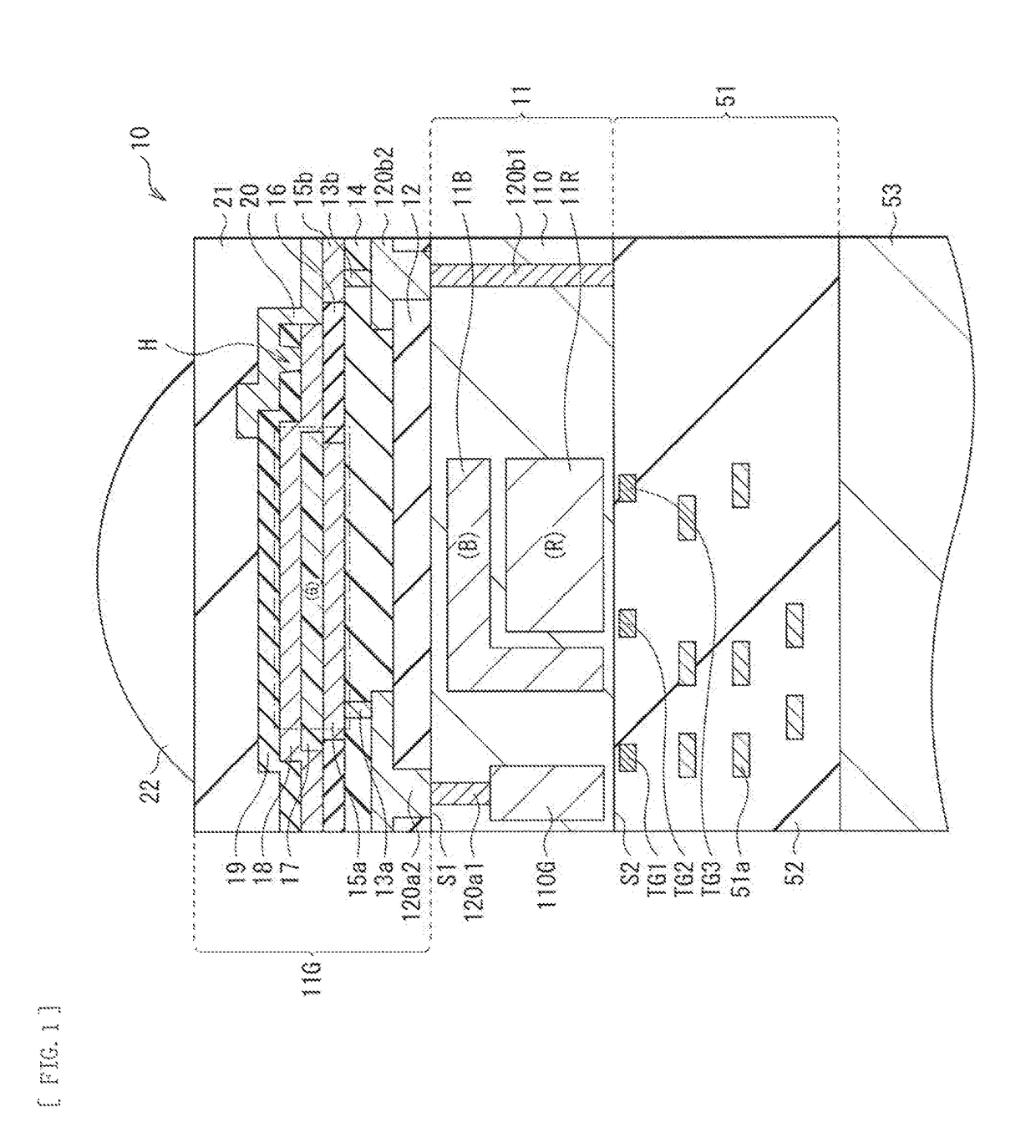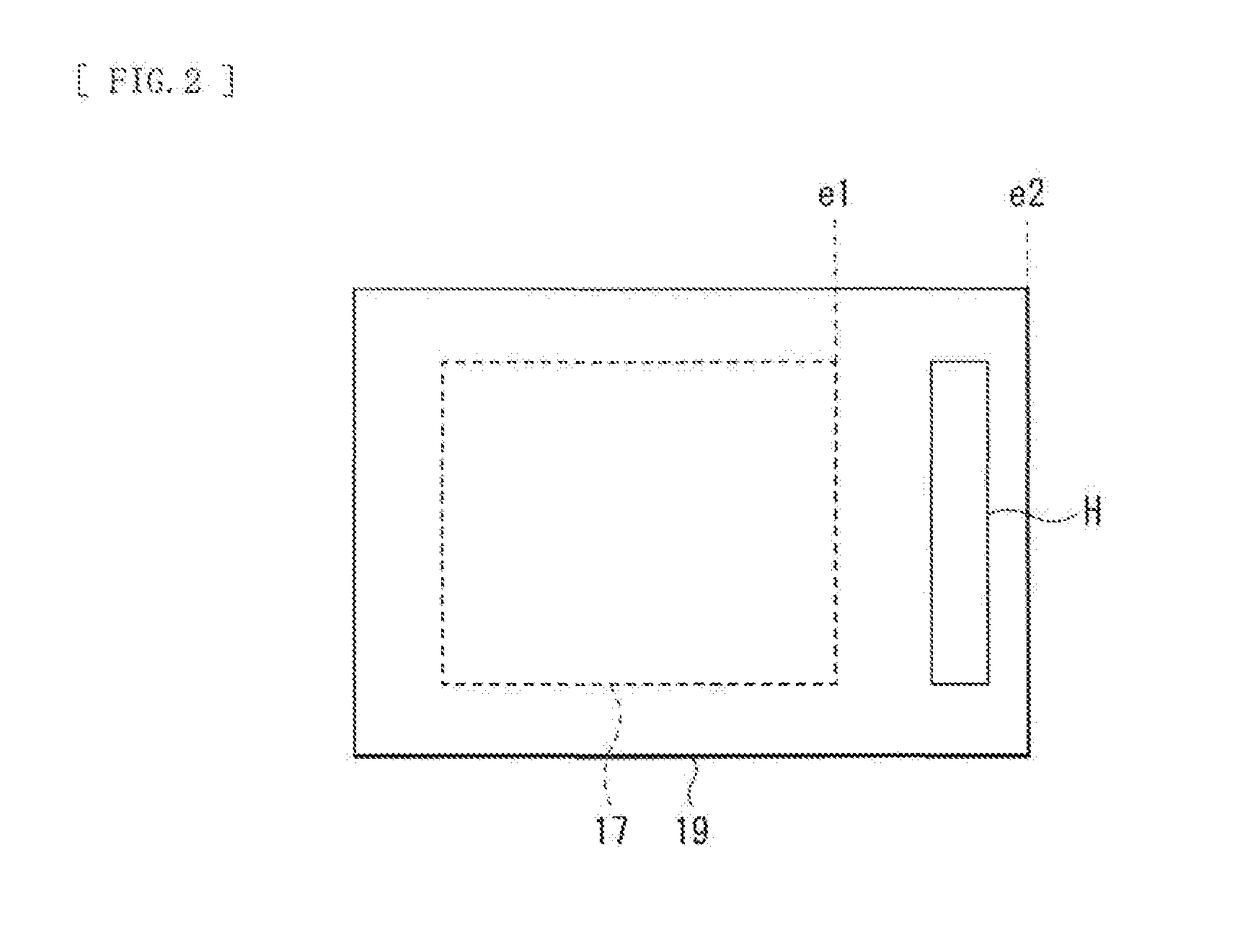Photoelectric conversion element, solid-state imaging device, and electronic apparatus
a technology of photoelectric conversion element and solid-state imaging device, which is applied in the direction of solid-state devices, semiconductor devices, radiation controlled devices, etc., can solve problems such as lowering color reproducibility, and achieve the effects of reducing interaction, and improving the spectroscopic shape of the photoelectric conversion elemen
- Summary
- Abstract
- Description
- Claims
- Application Information
AI Technical Summary
Benefits of technology
Problems solved by technology
Method used
Image
Examples
embodiment
1. Embodiment
[0041]FIG. 1 illustrates a cross-sectional configuration of a photoelectric conversion element (photoelectric conversion element 10) according to an embodiment of the disclosure. The photoelectric conversion element 10 constitute a single pixel in, for example, a solid-state imaging device (described later) such as a CCD image sensor and a CMOS image sensor. The photoelectric conversion element 10 includes, on side of a front surface (surface S2 opposite to light-receiving surface) of a semiconductor substrate 11, pixel transistors (including transfer transistors Tr1 to Tr3 described later) formed as well as a multi-layer wiring layer (multi-layer wiring layer 51).
[0042]The photoelectric conversion element 10 of the present embodiment has a structure in which one organic photoelectric conversion section 11G and two inorganic photoelectric conversion sections 11B and 11R are stacked in a vertical direction. The organic photoelectric conversion section 11G selectively det...
application examples
2. APPLICATION EXAMPLES
Application Example 1
[0104]FIG. 14 illustrates an overall configuration of the solid-state imaging device (solid-state imaging device 1) that uses, as each pixel, the photoelectric conversion element 10 described in the foregoing embodiment. The solid-state imaging device 1 is a CMOS imaging sensor. The solid-state imaging device 1 has a pixel section la as an imaging region on the semiconductor substrate 11. Further, the solid-state imaging device 1 includes, for example, a peripheral circuit section 130 configured by a row scanning section 131, a horizontal selection section 133, a column scanning section 134, and a system controller 132 in a peripheral region of the pixel section 1a.
[0105]The pixel section la includes, for example, a plurality of unit pixels P (corresponding to photoelectric conversion elements 10) that are arranged two-dimensionally in matrix. To the unit pixels P, for example, pixel drive lines Lread (specifically, row selection lines an...
application example 2
[0110]The above-described solid-state imaging device 1 is applicable to any type of electronic apparatus having an imaging function, for example, a camera system such as a digital still camera and a video camera, and a mobile phone having the imaging function. FIG. 14 illustrates an outline configuration of an electronic apparatus 2 (camera) as an example thereof. This electronic apparatus 2 may be, for example, a video camera that is able to photograph a still image or a moving image. The electronic apparatus 2 includes, for example, the solid-state imaging device 1, an optical system (optical lens) 310, a shutter device 311, a drive section 313 that drives the solid-state imaging device 1 and the shutter device 311, and a signal processing section 312.
[0111]The optical system 310 guides image light (incident light) from a subject to the pixel section la in the solid-state imaging device 1. The optical system 310 may be configured by a plurality of optical lenses. The shutter devic...
PUM
 Login to View More
Login to View More Abstract
Description
Claims
Application Information
 Login to View More
Login to View More - R&D
- Intellectual Property
- Life Sciences
- Materials
- Tech Scout
- Unparalleled Data Quality
- Higher Quality Content
- 60% Fewer Hallucinations
Browse by: Latest US Patents, China's latest patents, Technical Efficacy Thesaurus, Application Domain, Technology Topic, Popular Technical Reports.
© 2025 PatSnap. All rights reserved.Legal|Privacy policy|Modern Slavery Act Transparency Statement|Sitemap|About US| Contact US: help@patsnap.com



